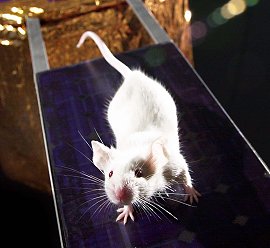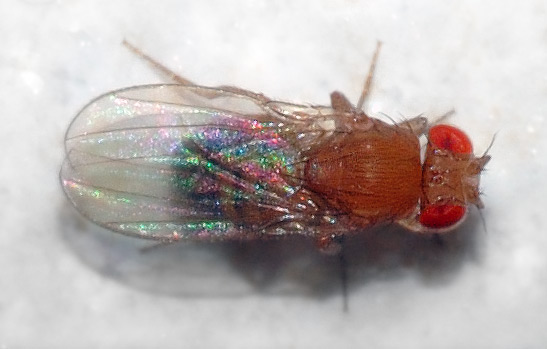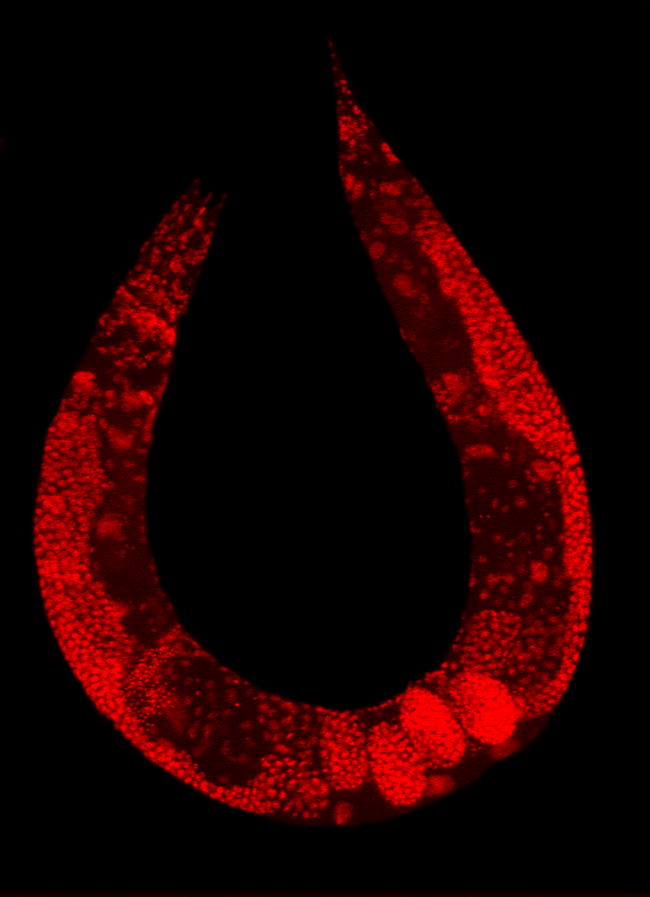Search site
Contact
E-mail: mda07lch@shef.ac.uk
Animal Models
Using animal models allows the effects of genetic mutations on an entire organism to be observed. Many of the genes in animals are conserved or have homologues in other animals and humans, making the work relevent to treating human disease.
Some of the advantages of model organisms used in developmental genetics are outlined below:
Mouse: (mus musculus)
 Vertebrate mammal - high conservation of genes with humans
Vertebrate mammal - high conservation of genes with humans- Roughly 7cm in length - small enough to keep in large numbers
- 10 weeks generaton time - quick production
- Genome is sequenced
- Can create 'knockout' genes
- Foreign DNA can be introduced into the animal models
Zebrafish:
 Vertebrate - gene conservation
Vertebrate - gene conservation- 2-4cm long - smaller than mice - more kept in same space
- 3months generation time - quick to produce, although not as quick as mice
- Produce large number of offspring - 100+
- Embryos are transparent - developmental changes can be observed
Drosophila Melanogaster:
 Invertebrate - less conservation however many homolgous genes
Invertebrate - less conservation however many homolgous genes- 3mm long - smaller than both zebrafish and mice - cheap and easy to grow
- 12 day generation time - quicker than zebrafish
- Produce large numbers of offspring - 100+
- Genome is sequenced
- Forgein DNA can be introduced into the animal models
Image courtesy of wikimedia commons under creative commons attribution share alike 2.5 liscence
Caenorhabditis Elegans (C.Elegans):
 Invertebrate
Invertebrate- 0.5mm in length - easy to grow and store, can be kept frozen
- 3 day generation time - quickest of all the above animal models
- Genome was the first to be sequenced
- Foreign DNA can be introduced into the animal model
- It is transparent - developmental differences within the organism can be observed
Image courtesy of wikimedia commons under creative commons attribution 2.5 liscence
Scientists must weigh up the options available to them and choose the animal model most suited to their study depending on the question to be answered, how much gene homology for the specific gene there is and how much space and funding they have available.
© 2009 All rights reserved.
